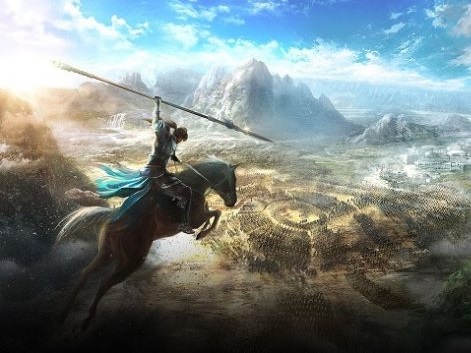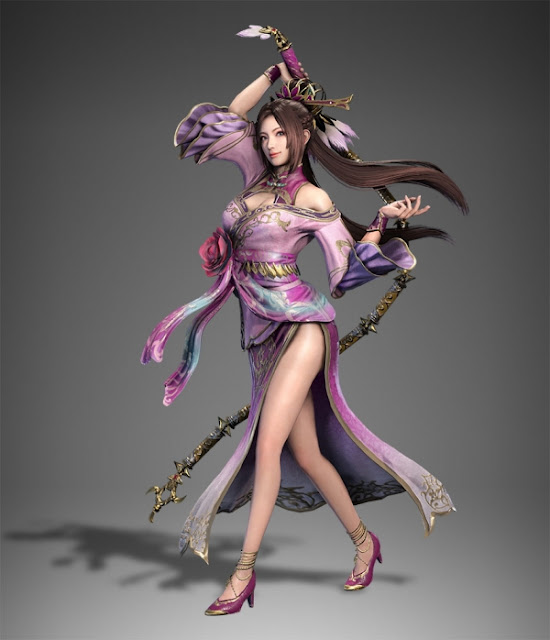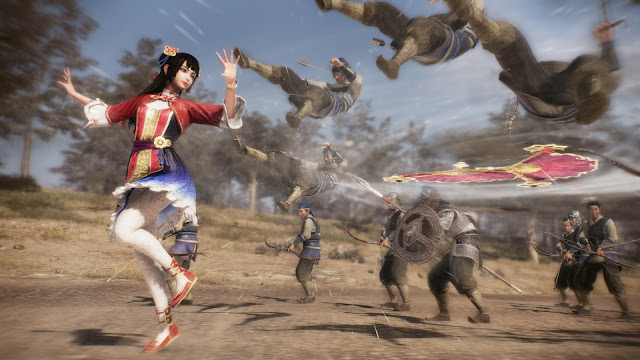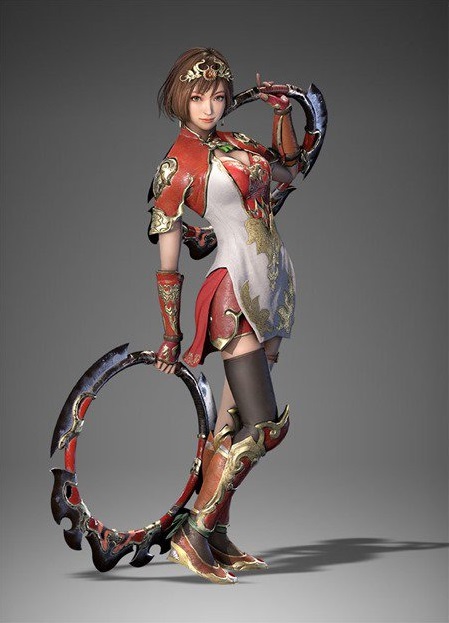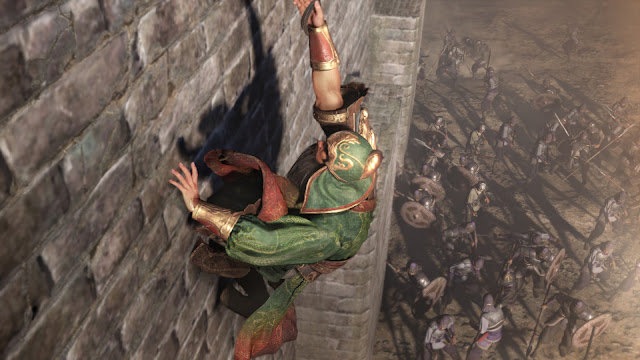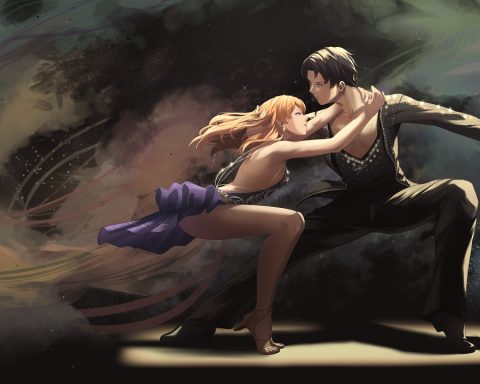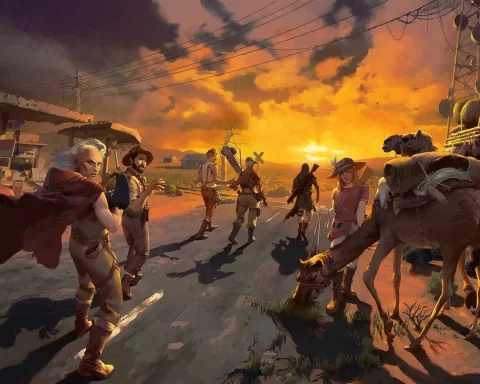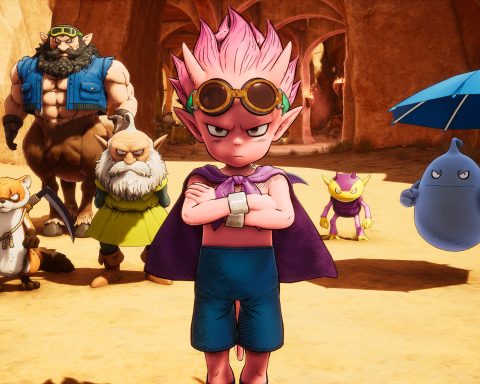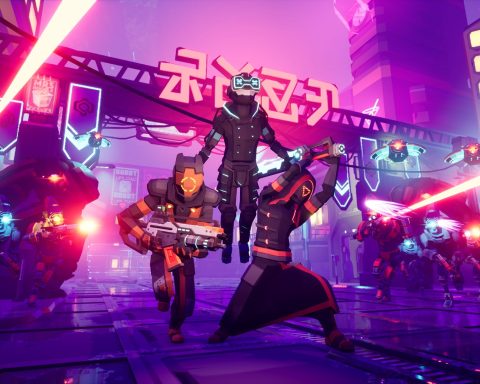Interview by Matt S.
Ahead of me was a castle that needed capturing. A few battalions of my army’s soldiers were already trying to clamber up the walls using ladders, while leaders barked out orders and a battering ram made its way slowly to the castle gate. Rather than participate in this chaos, I decided to do something different. I worked my way around to the back of the castle, where there weren’t soldiers manning the walls.
Related reading: Matt’s review of the last Dynasty Warriors game, Dynasty Warriors 8: Empires.
I used my grappling hook to scale the wall, dropping inside in the middle of an enemy battalion. Quickly dispatching the leader to negate the threat of the soldiers surrounding me, I quickly ran past another couple of battalions to the entrance of the castle. There I removed the beam keeping the gates shut, and allowed a flood of my own soldiers to enter the fray. Soon after, that castle was mine.
The upcoming Dynasty Warriors 9 is a radical departure to the structures that have largely held the series together in previous itirations. Cinematic and breathtaking in scope, Dynasty Warriors 9 offers a massive open world, with plenty of freedom in terms of how you go about achieving objectives and completing missions for whatever warlord you’ve selected as your favourite.
In fact, the game’s core inspiration has more to do with another (deeply underappreciated) Koei franchise than the Warriors series itself, Dynasty Warriors 9 producer, Suzuki Akihiro, told me.
“Bladestorm is definitely one of the biggest influence on this game,” he said. “The game style is similar in the way that the troops and units are organised and move around. In fact, a lot of the staff on this game, myself and the director (Miyauchi Atsushi) included, were also on the Bladestorm games.”
For those who haven’t played Bladestorm – it was closer to a wargame, in that you would play as the commander of various units on the battlefield, but the battlefield was so vast (the entirety of northern France and south England) that it was impossible to be everywhere. Even so, the other units in your armies would attack critical locations, defensive lines would be pushed back, and if you stood still, the battle would still flow around you. There was a majesty to the sheer sense of scale that made Bladestorm a really intriguing game, even if the critical and commercial reception was never quite what it deserved to be.
Dynasty Warriors 9 takes that same epic scale, but gives you the fluid action and control over a single character as with the previous Warriors games. It’s an appealing mix, and from my limited time with the game at Tokyo Game Show this year, I was won over by it completely; there really is the sense that you can do anything you like, even as all hell breaks out around you.
Indeed, if you were to have your character jump on a horse and travel across the entire map without stopping, you’d be riding for over three hours, and the open world engine would handle that, Suzuki said. That’s the kind of epic scale that we’re talking about here.
“We’ve been able to put China on one open world map, which is certainly something new for the series,” Suzuki said. “The other big thing that we’ve worked to add to the game is in allowing players a lot more freedom in terms of what they can do. They can move freely throughout the map, and in terms of battle there are many different ways to complete the goals.”
Giving players freedom means that it’s not just about combat, Suzuki added. Much like Samurai Warriors: Spirit of Sanada, in Dynasty Warriors 9, players who are interested in the history and characters of the era will be able to indulge in that side of things to a far greater degree than they had previously, by taking some time away from the battle zones to interact with characters in a peace-time setting.
“During any given mission there are areas that are not part of the battle; neutral areas,” Suzuki said. “For example, early on much of the action is concentrated in the north of China. If you were to then travel to an area in the south you’d run into someone not part of the current war, say, for example, Sun Ce, and you’d be able to meet with him outside of battle and have conversations.”
“We’ve also deepened the various relationship interactions between key characters, so players can get a stronger sense of the historical relationship that these people had.”
On history in Dynasty Warriors
I’ve written about it extensively in the past, but Koei Tecmo’s Warriors games never get the respect they deserve as works of historical fiction themselves. Of course they’re not realistic depictions of the history of the time, but as abstractions, they’re remarkably authentic, and this is a big part of what I love about them.
So I was interested to see how the shift to the open world would affect the storytelling. Specifically, whether this additional freedom being provided to players would allow players to effectively change history and enter “what if” scenarios, where battles that were lost were won, and characters that had historically survived instead died.
According to Suzuki, the storytelling itself is one area where players won’t be free to change things up.
“There won’t be any hypothetical situations in this one,” Suzuki said. “Characters will live and be active throughout the game according to their historical roles. Narratively some characters that historically died we’ve instead allowed to live, but they’re still removed as playable characters at that point.”
Mechanically what that means is that while you’ll have around 80 characters to choose between, some of them have very short campaigns indeed. If you were to pick Cao Cao, who was active through most of the Three Kingdoms period, you could expect to be playing for a long time. But, if you were to instead pick a character like Sun Ce, who did die early on, your campaign would be far shorter.
There are also new characters to choose from, and Dynasty Warriors 9 has the franchise’s largest roster to date. At 80 characters, the development team is starting to drill down into characters who had relatively minor historical roles, so I asked Suzuki how the team selected which characters would make the cut.
“Even though we’ve already got the most famous characters from within Romance of the Three Kingdoms, we have bios of a lot of other characters that are comprehensive enough to be able to build a picture of them within the game,” Suzuki said. “And even beyond Romance of the Three Kingdoms, there are a lot of folk tales and other records from the timeline to draw on. We can also look into some of the fantasy characters from the story; we’ve added Diaochan and Zhou Cang into our rosters, for example, but both were fictional, rather than historical, characters.
“As for how we select our characters, for our internal development team we have a character map where we trace every character and their characteristics and personality traits so they don’t overlap and so their characters are unique individuals. In addition, for each new character we look at the existing web of character relationships with each other, and the more relations a character that isn’t on the roster yet has, the more likely they are to be selected so we can build on existing stories.”
Romance of the Three Kingdoms is a weighty, epic book itself, and over the years the level of research that has gone into Dynasty Warriors has meant that a number of the people on the development team have real historical expertise. I wondered if they went one step further and mandated that each person that joined the team had extensive knowledge of the book and history. Suzuki laughed at this, and said it wasn’t the case.
“Actually, the game’s director, (Miyauchi) is himself not that well versed in the Three Kingdoms saga,” Suzuki said, shattering my illusion that the entire Omega Force team spends their lunch breaks re-reading Romance of the Three Kingdoms for the thousandth time. “Even a character like Lu Bu. In Japanese he is pronounced Ryo Fu, anyone even slightly familiar with the Three Kingdoms story would know how to read his name, but he misread it as Ro Fu (Ryo and Ro share the same kanji character in Japanese, but Ro being the more common usage), so even though we have a lot of people who really know their stuff when it comes to ancient Chinese history, we don’t even require the director to be one of them!”
Dynasty Warriors 9 will launch in 2018 in the west, and is already one of our most anticipated games for the year. This one will be huge.
– Matt S.
Editor-in-Chief
Find me on Twitter: @digitallydownld
 |
| Please Support Me On Patreon!
|

